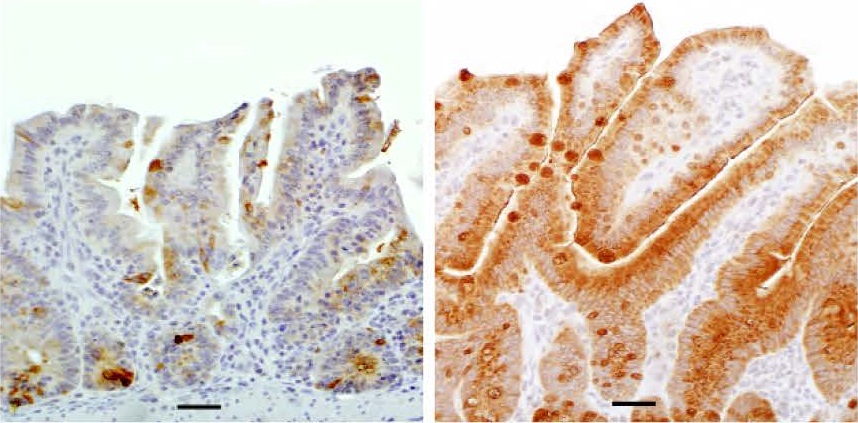

BMT, GVHD, and MAGIC
The Ferrara Laboratory investigates the immunobiology of allogeneic hematopoietic stem cell transplantation, commonly referred to as bone marrow transplantation (BMT). First utilized over 50 years ago, allogeneic BMT represents one of the earliest forms of stem cell therapy, cancer immunotherapy, and personalized medicine. Much of the success of allogeneic BMT in treating hematologic malignancies derives from the powerful graft versus leukemia effect exerted by donor T cells. But donor T cells also mediate graft versus host disease (GVHD), the major toxicity of BMT, which can be lethal.
Using pioneering proteomic techniques, the lab has identified and validated unexpected biomarkers for skin, gut, and steroid-resistant GVHD. We have used exceptionally large and informative biorepositories to meld the most informative biomarkers into the first algorithm that predicts lethal GVHD prior to the onset of symptoms. The capacity of biomarkers to guide therapy is the driving force that led to the establishment in 2014 of MAGIC (Mount Sinai Acute GVHD International Consortium), a consortium of twenty-five BMT centers in the USA, Europe and Asia that conducts clinical trials to prevent and treat acute GVHD.
Serum Biomarkers of GVHD
In these projects, we aim to use novel and established proteomic techniques to identify and validate biomarkers of GVHD, and subsequently combine these into predictive algorithms. Such algorithms will further be tested in innovative clinical trials, to prospectively assess their capacity to help diagnose and treat acute GVHD. Specific projects include:
- The development of a biomarker algorithm to identify patients at high risk of developing acute GVHD prior to the onset of clinical symptoms. Such an algorithm would then facilitate a clinical trial of pre-emptive treatment of acute GVHD for high-risk patients.
- The use of biomarkers in real-time to stratify patients with diagnosed acute GVHD into those at high risk for severe disease. These patients are then eligible for a trial of monoclonal antibody therapy in addition to high dose steroids as primary treatment.
Our biomarker projects are collaborative, using patient data and samples from twenty-five bone marrow transplant centers across the USA, Europe and Asia. Together, these centers comprise MAGIC (Mount Sinai Acute GVHD International Consortium), under the leadership of Dr. Ferrara.
Mechanisms of GVHD Pathophysiology
These projects aim to dissect the biological pathways of GVHD at the cellular and molecular levels, using both in vitro assays and in vivo murine models. There is synergy to be found with the biomarker work, since biomarkers of GVHD may play an active role in the pathophysiology of GVHD and may represent potential therapeutic targets. Current projects include:
- Paneth cells, an important epithelial component of the intestinal stem cell niche, are targets of GVHD. Interestingly, serum Reg3α and its murine orthologue Reg3γ, produced by the Paneth cells, are strong predictive biomarkers of intestinal acute GVHD. We are exploring the role of Reg3γ in mouse models of GVHD.
- Soluble ST2, a decoy receptor for IL-33, represents a powerful predictor of acute GVHD. We are aiming to further understand the pleiotropic roles of IL-33 signalling in acute GVHD.


